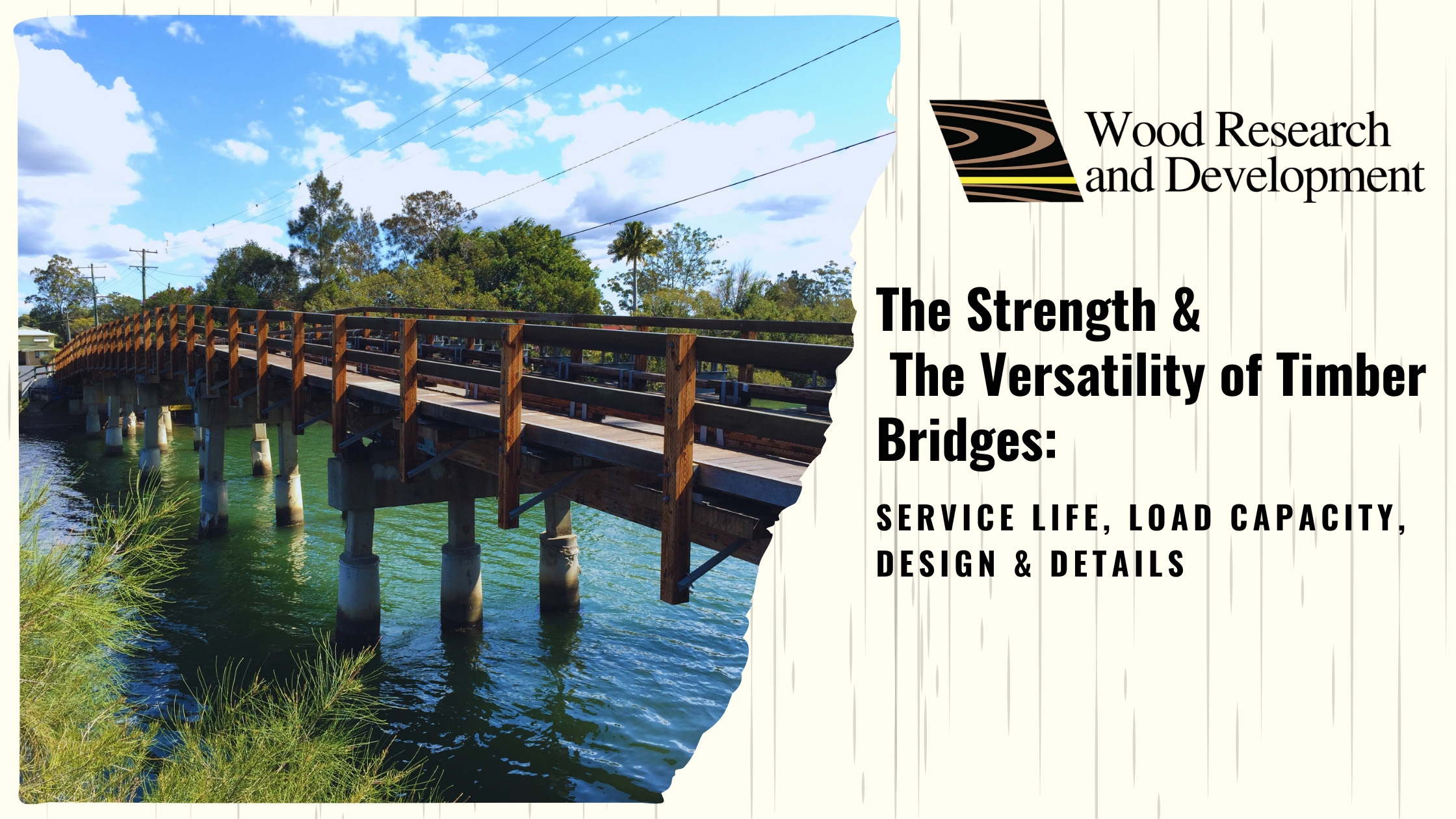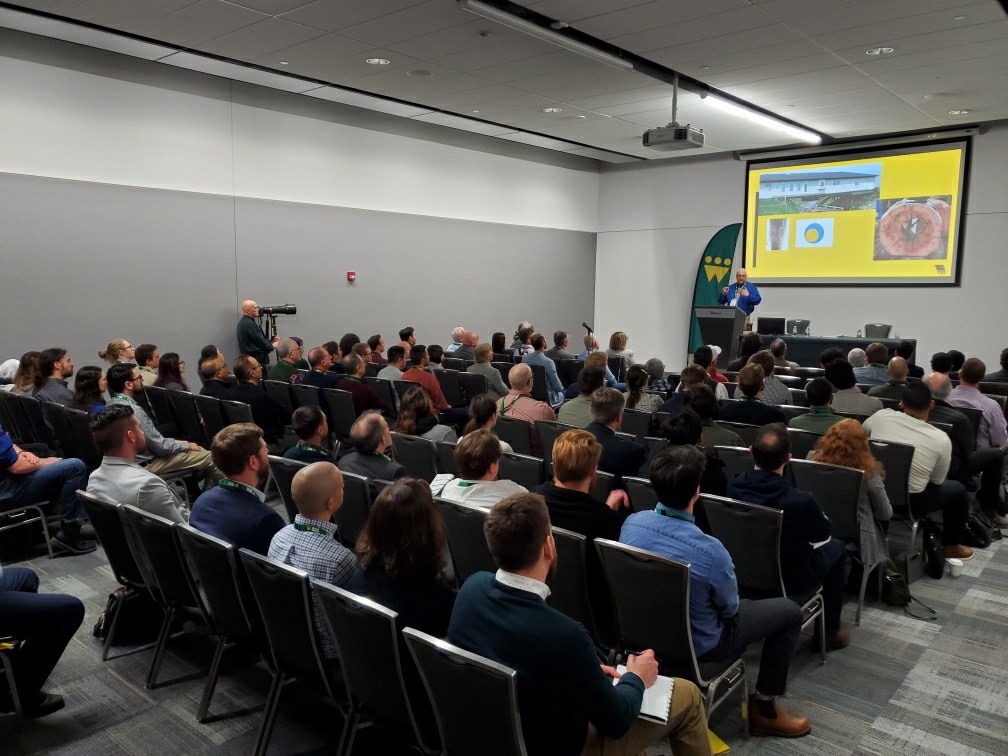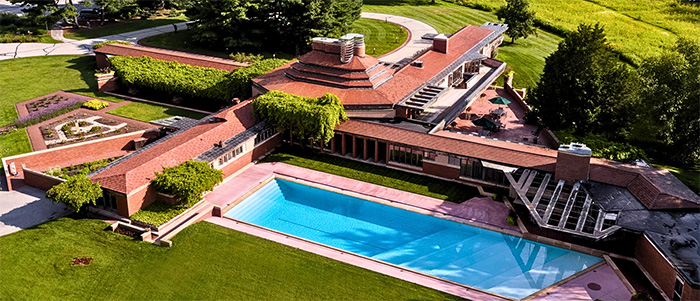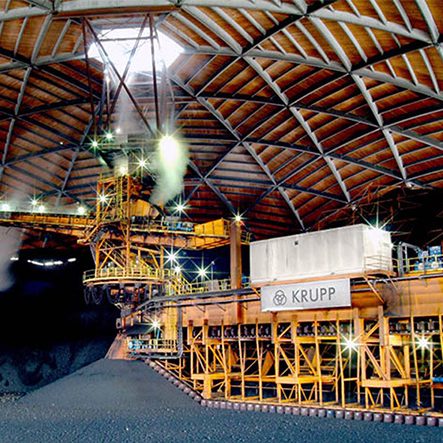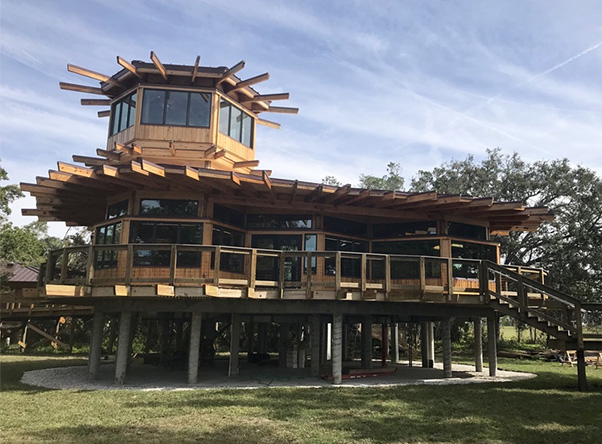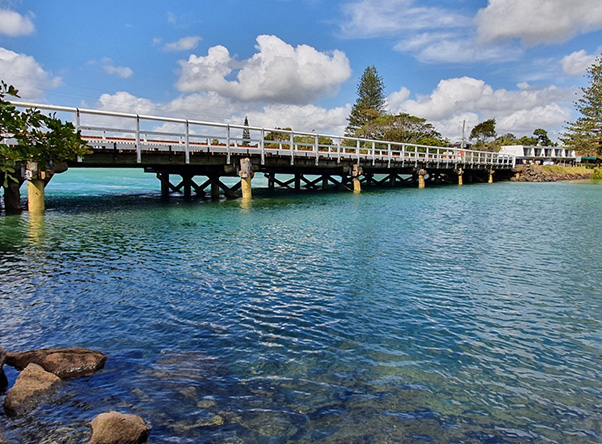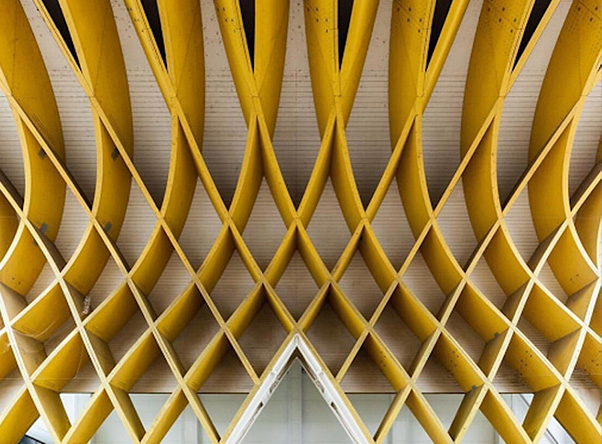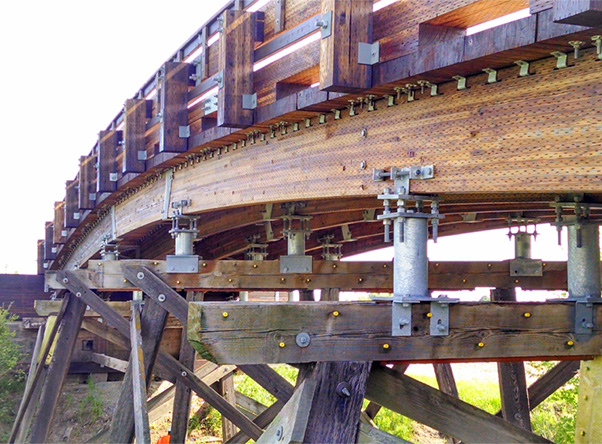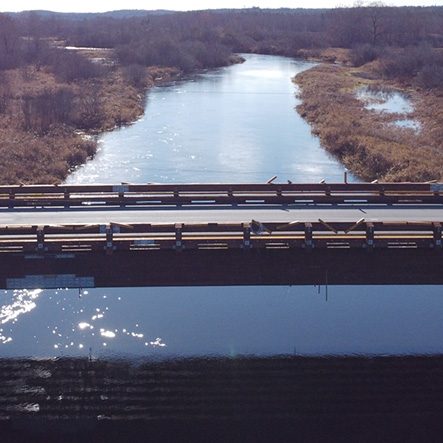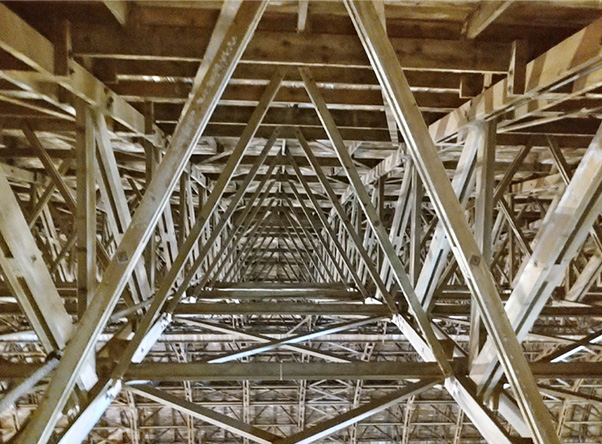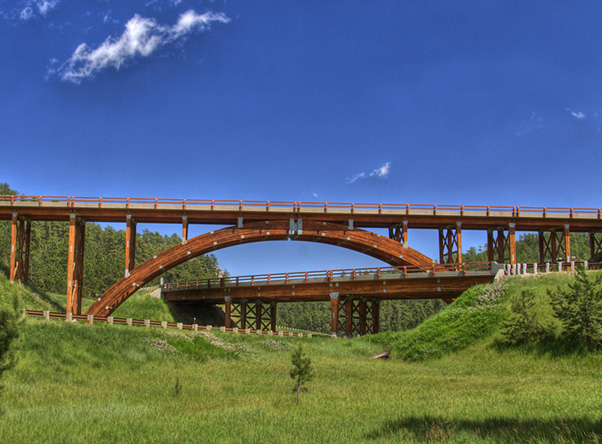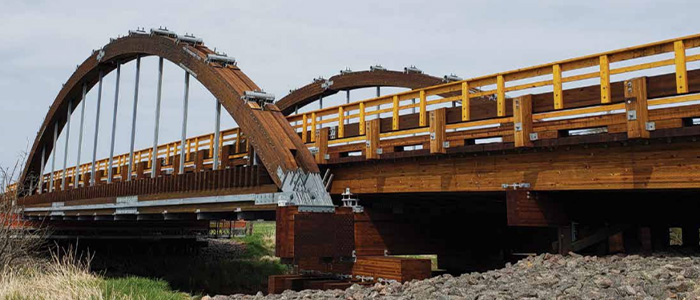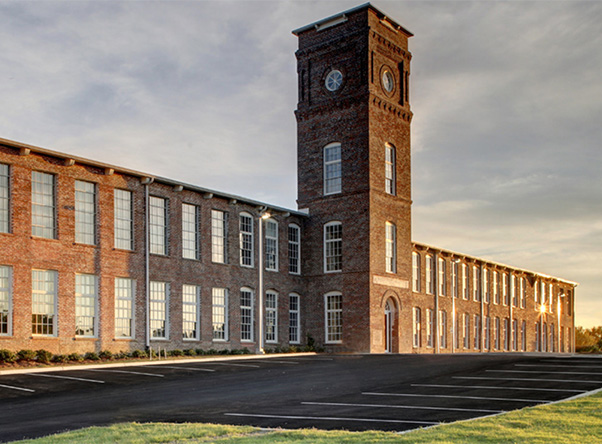Introduction:
Timber bridges have stood the test of time, providing reliable and aesthetically pleasing transportation solutions for centuries. They can be found in nearly every country around the world in some capacity or distance, some are still in service and others have been closed or decommissioned after being in use for over 80 years. With the advent of modern engineering and construction techniques, timber bridges have become even more durable, sustainable, and versatile. In this blog post, we will delve into the world of timber bridges, focusing on key aspects such as mass timber, service life, load capacity, bridge size, and the materials used in finishing details. So let’s explore the remarkable qualities of these structures and how they meet the demands of today’s transportation needs.
The Strength of Timber Bridges:
Timber bridges are constructed using various types of timber, with mass timber emerging as a popular choice. Mass timber refers to large structural components made from solid wood or engineered wood products, such as glued laminated timber (glulam) or cross-laminated timber (CLT). These materials offer exceptional strength-to-weight ratios, allowing them to handle heavy loads while maintaining structural integrity. In addition to their exceptional strength, mass timber materials also possess a high level of dimensional stability. This ensures that bridges constructed from these materials resist distortion even in extreme weather conditions, further improving their service life. The use of mass timber also enables bridges to be built with taller spans and wider widths than other types of bridge construction, making them.
Impressive Service Life:
One common concern regarding timber bridges is their service life. However, advancements in timber treatment and maintenance practices have significantly extended the longevity of these structures. Timber bridges can now last for nearly a century, rivaling or even surpassing the service life of other bridge materials.
The service life of a timber bridge is influenced by several factors, including the type of timber used, the bridge’s design and construction techniques, and the local environmental conditions. By employing appropriate timber preservation methods, such as pressure treatment, these structures can resist decay, insect infestation, and other forms of deterioration, ensuring longevity and reducing the need for frequent maintenance.
Load Capacity:
When evaluating the load capacity capabilities of timber bridges and mass timber bridges, there are several factors that must be taken into consideration. The size of the bridge span is a major factor in determining the load capacity of both types of structures. For example, a small single-span timber bridge may only be able to support up to 10 tons while a large multi-span mass timber bridge could support up to 100 tons or more. In addition, environmental conditions can play a role in determining the load capacity of both types of structures; for instance, high winds or heavy snowfall can reduce the load capacity of both types of structures significantly.
The longevity and safety concerns associated with each type of structure must also be taken into account when evaluating their load capacity capabilities. it is believed that Timber bridges and mass-timber bridges tend to have shorter lifespans due to their susceptibility to rot and decay over time. However, they can still provide many years of service if properly maintained. Mass timber bridges offer greater durability due to their engineered wood components which resist rot and decay better than traditional lumber materials; however, they require more maintenance in order to ensure their structural integrity over time.
In terms of increasing the load capacity capabilities of either type of structure, there are several methods that can be employed depending on the specific project requirements. For example, adding additional supports or strengthening existing components such as cross bracing can help increase the load-bearing capacity for both structures. Additionally, using higher-grade materials such as CLT or glulam can also help improve the overall strength and durability of mass timber bridges while providing additional protection from environmental elements such as wind or snowfall.
Design Considerations:
Overall, both timber bridges and mass timber bridges offer unique benefits when it comes to spanning waterways or roads; however, it is important for engineers and designers alike to consider all factors when evaluating their load capacity capabilities in order to ensure safe and reliable operation over time. By taking into account factors such as environmental conditions, longevity, safety concerns, and building methods when designing these structures engineers can ensure that they will provide many years of service while meeting all project requirements safely and efficiently.
Bridge Size and Spans:
Timber bridges come in various sizes and can span impressive distances. The size and span of a timber bridge depend on factors such as the intended usage, environmental conditions, and design requirements. They can be designed as short-span or long-span structures. Short-span designs typically span up to 50 feet, providing cost-effective and efficient solutions for pedestrian and light vehicle traffic. On the other hand, long-span designed bridges can extend well beyond 150 feet, accommodating heavier loads and longer distances.
Finishing Details and Material Treatment:
The finishing details and treatments of structures are some of the most critical factors as it pertains to the lifespan of a structure. There are various connection and treatment types that are employed to ensure the durability and longevity of timber bridges. These treatments provide protection against weathering, moisture, UV radiation, and other environmental factors. One commonly used treatment method is pressure treatment, staining, and the specific types of connectors and fasteners that are used. which involves impregnating the timber with preservatives under high pressure. This process helps prevent decay, insect damage, and fungal growth. Additionally, timber bridges can receive surface treatments such as stains, paints, or protective coatings, enhancing their visual appeal while providing additional protection against the elements.
Conclusion:
Timber bridges continue to be a reliable, sustainable, and aesthetically pleasing solution for transportation needs. With advancements in construction techniques, the use of mass timber, and proper treatment and maintenance practices, timber bridges boast impressive service lives, load capacities, and design potential. By taking into account factors such as bridge size, environmental conditions, finishing details, and material treatment when designing timber bridges, engineers and designers can ensure that these structures are safe and reliable for many years to come.
Wood Research and Development
For more information on Engineering, Structural Engineering, Timber Repair, restoration, inspection, testing, or wood technology topics please subscribe to our blog below. Also, to find out more information on Wood Research and Development (WRD) and the services we offer, and how we can help you with your next project please visit us here
References:
1.Moeliker, J., Schickhofer, G., & Schickhofer, G. (2008). Mass Timber Bridges: Design and Construction. Routledge.
2.Puettmann, J., & Humbert, M-A. (2014). Cross Laminated Timber in Bridge Structures. Fraunhofer IRB Verlag
3.Schmidt, W., Matzenauer, R., & Toppe, M. (2016). Durability of Timber Bridges: Long-Term Behaviour and Maintenance. Springer International Publishing.
4.Timber Bridge Manual (2007). Federal Highway Administration, U.S. Department of Transportation
5.Wood Preservation Canada (2016). Wood Preservation Technology Handbook for the Canadian Forest Products Industry Edition 5th ed. Wood Preservation Canada.
6.Woods, S., & Woods, J. (2010). Timber Bridges: Design, Construction, and Maintenance. Elsevier Science Limited.
7.Wright, C., & Vaidyanathan, K. (2018). Bridge Engineering Handbook: Design and Construction Concrete, Steel, and Composite Bridges. CRC Press Taylor & Francis Group.

